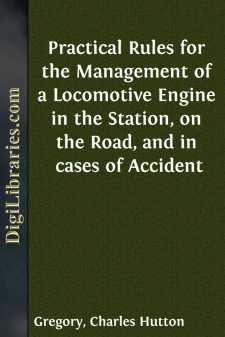Categories
- Antiques & Collectibles 13
- Architecture 36
- Art 48
- Bibles 22
- Biography & Autobiography 813
- Body, Mind & Spirit 142
- Business & Economics 28
- Children's Books 14
- Children's Fiction 11
- Computers 4
- Cooking 94
- Crafts & Hobbies 4
- Drama 346
- Education 46
- Family & Relationships 57
- Fiction 11829
- Games 19
- Gardening 17
- Health & Fitness 34
- History 1377
- House & Home 1
- Humor 147
- Juvenile Fiction 1873
- Juvenile Nonfiction 202
- Language Arts & Disciplines 88
- Law 16
- Literary Collections 686
- Literary Criticism 179
- Mathematics 13
- Medical 41
- Music 40
- Nature 179
- Non-Classifiable 1768
- Performing Arts 7
- Periodicals 1453
- Philosophy 64
- Photography 2
- Poetry 896
- Political Science 203
- Psychology 42
- Reference 154
- Religion 513
- Science 126
- Self-Help 84
- Social Science 81
- Sports & Recreation 34
- Study Aids 3
- Technology & Engineering 59
- Transportation 23
- Travel 463
- True Crime 29
Practical Rules for the Management of a Locomotive Engine in the Station, on the Road, and in cases of Accident
Categories:
Description:
Excerpt
PREFACE.
The substance of the following pages was written several months since, and subsequently sent to the Institution of Civil Engineers, where it was read in abstract on the 16th of February in the present session.
While our Engineering Literature contains several valuable Treatises on the Theory and Construction of the Locomotive Engine, it has, as yet, produced no work illustrating its Use. This circumstance, added to the recommendation of several competent authorities, has induced the writer to apply to the Council of the Institution of Civil Engineers for permission to lay before the public these Practical Rules for the Management of a Locomotive Engine, drawn up from individual experience, in the hope that they may be acceptable, at a period when any subject connected with the efficiency and safety of Railway travelling is deservedly engaging attention.
At the end of the Paper will be found some Regulations for the first appointment of Engine-men, adopted by the Directors of the London and Croydon Railway, and framed by the writer in his official capacity as their Resident Engineer. Also, a Table of Railway Velocities, indicated by the time occupied in passing over given distances, which he has frequently found to save him the trouble of calculation, and which he hopes may be similarly useful to others.
Charles Hutton Gregory.
London, March, 1841.
THE MANAGEMENT OF A LOCOMOTIVE ENGINE IN THE STATION.
The careful examination of a Locomotive Engine when in the Station, and its judicious management while running, are essential to the full performance of its duty, and to ensure the safety of the passengers by the train.
While an Engine is stopping at the Station before a trip, the fire should be properly kept up,—the tubes clear at both ends,—and the fire-bars picked free from clinkers: the regulator should be closed and locked,—the tender-break screwed down tight,—the reversing-lever fixed in the middle position, so that the slides may be out of gear,—the cocks of the oil-vessels and feed-pipes turned off,—and the steam blowing off from the safety-valve at a pressure of 35 lbs. per square inch; if blowing off in any excess, the waste steam may be turned into the Tender-cistern to heat the water, and the door of the smoke-box may be opened to check the fire, but it should be fastened up again 10 or 15 minutes before the time of starting.
Before an Engine starts with a train, the attention of the Engine-man should first be directed to its being in complete working order; with this view he should go beneath the Engine, and carefully examine the working gear in detail.
The connecting-rod is a very important part, and more liable perhaps than any other to fail for want of proper examination. The cotters must be secure, and in case the brasses have too much play they must be tightened up; observing, however, that brasses should never be set so hard as to cause friction. If there are set-screws at the side of the cotters, they should be tight, and all cotters should have a split-pin at the bottom for greater security. The cotters which fasten the piston-rods to the cross-heads should be firm in their place, as well as the set-screws, keys, or other connections, by which the feed-pump pistons are secured to the piston-rod.
The brasses of the inner framing which carry the inside bearings of the cranked axle must be examined, and any considerable play prevented by screwing them up if necessary. The wheels ought to be accurately square and firm on their axles, and the keys driven up tight. All the pins, bolts, &c., by which the slide-valve gear is connected, the lifting-links, and the slings of the slide-spindles, must be secure in their proper places; the spanners ought to be fast on the lifting and weigh-bars, and the studs on the spanners of the weigh-bars should be particularly noticed, as, if loose, they may be shaken off on the road and cause the stoppage of the Engine. A similar examination must be extended to the hand-gear, if there be any; and the bolts which fasten the plummer-blocks of the weigh-bars, &c., must be screwed up if they are loose....


